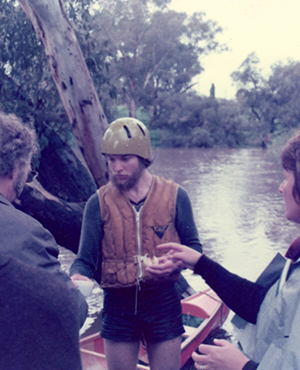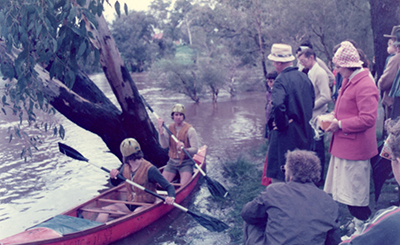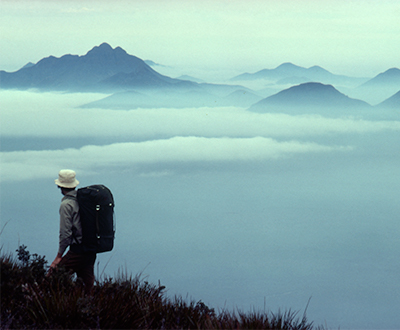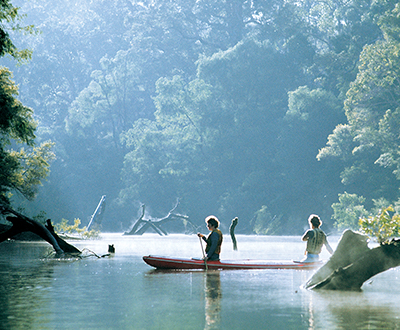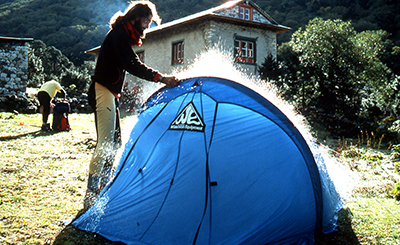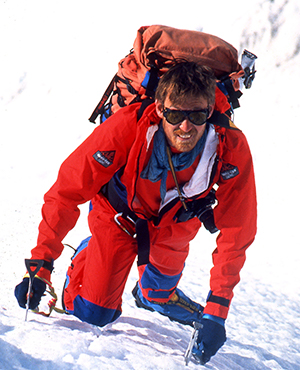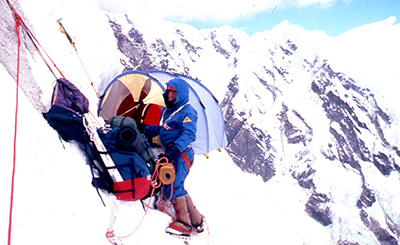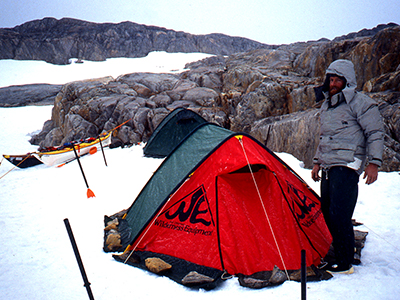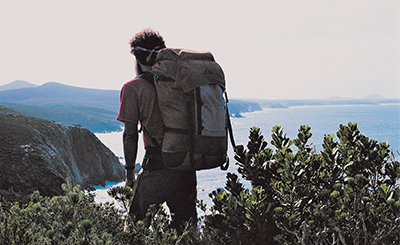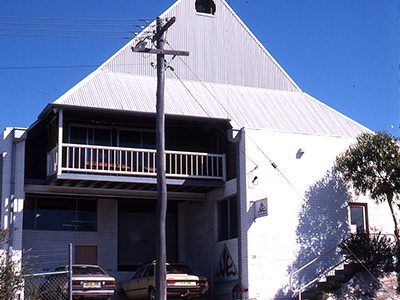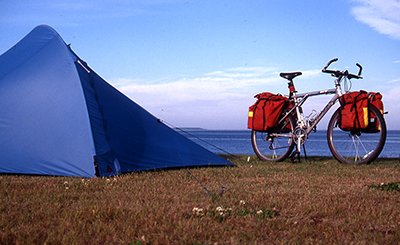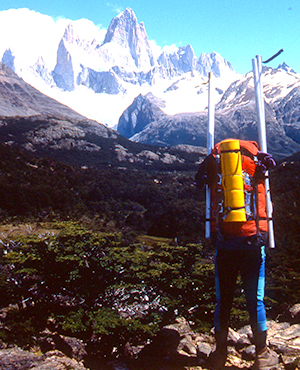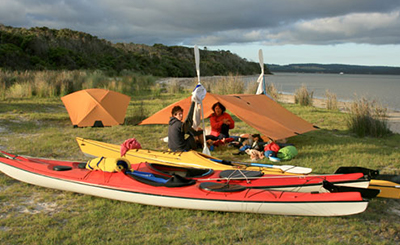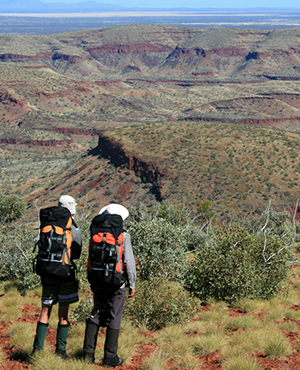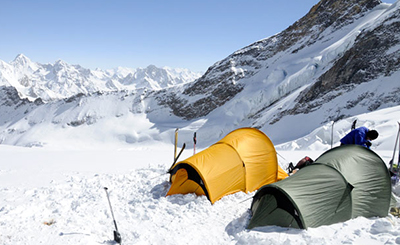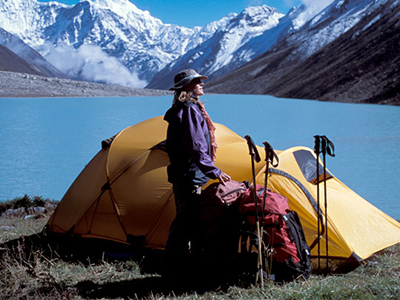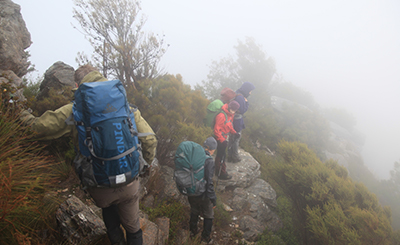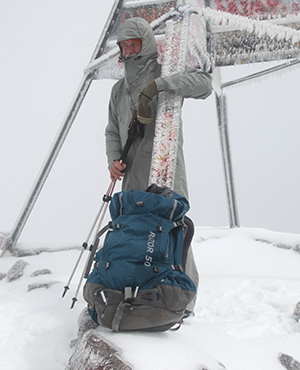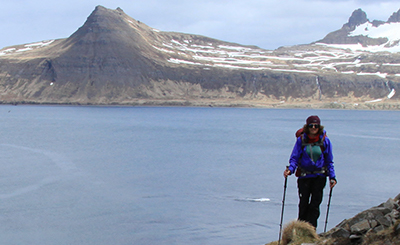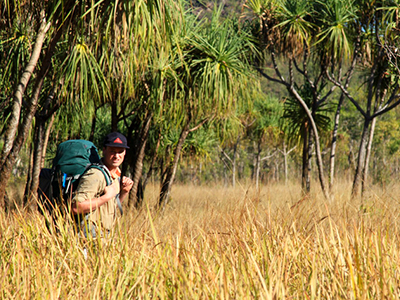- Behind We
- Our History
A piece of history
Wilderness Equipment is a continuing story. I hope this brief history will give you some understanding of our heritage, our values and how we fit into the outdoor industry.
The story of WE's beginnings has much in common with those of many worldwide outdoor brands. The ingredients were frequently the same - young people, little money, a passion for what we then called 'rope and rucksack' pursuits, a critical eye for design and quality, and an incurable need to be making things. What is interesting is that for WE it all came together in the south-western corner of the flattest and driest inhabited continent on earth, some would say, the farthest outpost of western civilisation.
When it all started
The nineteen seventies was a time when you could still lift the bonnet on the engine of your car, understand what you were looking at, and have a hope of fixing it. For many of us tertiary study was not the headlong rush to paid employment it seems to be now. Changes of direction were common and in my case I chose a creative route, making my own outdoor equipment, advancing the design of the gear that had let us down or proved inadequate on our back-country adventures. From behind pattern tables and sewing machines, we learnt what was possible and how best to do it. We did the testing ourselves, on weekends and longer expeditions, and personally suffered the consequences of a bad idea, design oversight or sloppy work. These early encounters with nature have made us who we are. Bad weather and difficult terrain have become familiar and welcome challengers of both our comfort and our products, drawing out inspiration and giving meaning to the satisfaction that comes when a product earns wide respect.
In 1974 I made a tent I couldn't afford to buy at the time, the Fjallraven 'Original' model. One week searching out locally available materials, another to sew it. That was the first TR TENT, with its two upright poles, traverse ridge and double vestibules.
Two sewing machines & the drug squad
The mid-seventies saw the start of clear-felling and wood-chipping in the karri forests of SW Australia. The extremely wet winter of 1974 made it feasible to paddle much of the length of the Shannon River and out into Broke Inlet. This experience, added to that of many bushwalks in the heart of the unique and magnificent karri made a strong, personal stance for conservation inevitable. It started with membership of the Campaign to Save Native Forests and a parallel campaign we ran through the Swan Canoe Club and the conservation sub-committee of the Amateur Canoe Association of WA, to bring the concept of protecting 'Wild and Scenic Rivers' before the public, the Forests Department and Government. In 1975 the Department of Conservation covered my expenses to complete a full canoe-based exploration of all the karri forest rivers. (This work was later picked up by the then Department of Sport and Recreation and lead to the canoeing guides for these rivers). In 1976 the South-West Forests Defence Foundation was formed with the backing of some Western Australian academics and professionals. The unwritten aim of the SFDF was to challenge clear-felling through legal action and a number of court actions were undertaken. With generous donations and bequests the SFDF has quietly provided crucial support to many of the public campaigns that have lead to new national parks and protected areas of forest. Through the particular dedication of other long-time members we have kept the SFDF Inc functioning to this day.
We spent '76 bushwalking and cycle touring all around Australia. The tent never let us down and was frequently admired by fellow travellers, one in particular who worked in Sydney's Sussex street outdoor shop Norski. In August 1977, back home in Western Australia, we purchased two industrial sewing machines, started WE but also went back to studies. From two rooms in the family home (parents retired and travelling), using local and imported fabrics we turned out tents, daypacks, cycle panniers, synthetic sleeping bags and jackets. Down-filled continental quilts were a side-line. Friends worked part-time and the drug squad cops raided the house following a tip-off from neighbours regarding the frequent comings and goings.
Out of the family home & starting to get traction
In 1979, having moved Wilderness Equipment into a loft in one of the historic buildings of the west end of Fremantle, I made the decision to pursue business full-time. In November that year we started manufacturing Gore-Tex® rainshells and shortly after, our first internal frame expedition backpacks and tunnel tents. We would soon start to supply retailers on the east coast but in Western Australia we valued and retained our direct contact with customers (and friends) in the local outdoor community. Over the next 15 years this contact helped our involvement in the rapidly expanding forest conservation campaign and also in the new directions for skills training and certification in the fields of outdoor leadership and education.
Reaching new heights & making a name for ourselves
Back in the factory it was difficult to resist the increasing demands of Wilderness Equipment on our time and energy. In 1983 we purchased a building in North Fremantle and in 1988 added a second storey while continuing to work on the ground floor! Besides our shellwear, warmwear, backpacks, daypacks, tents and cycle bags we produced all the Australian Antarctic Division's expedition tents, as well as specialist clothing and packs for them and many other industrial customers. WE had become a respected supplier with a unique combination of analytical and innovative design ability, materials understanding and manufacturing quality control. It was the source of some satisfaction to be told that our Gore-Tex® shellwear was the most warranty-problem-free in the country.
A new kind of expansion & keeping up with demand
From the early nineteen eighties right up to this day, life has been the full-time balancing act most of us understand all too well. Our heads may have drifted off into the mountains or to running down some river but our bodies were mostly in the factory or at home with young children. Like any reasonable small business we looked upon our staff (up to 25 at times) as co-workers for whom we accepted certain responsibilities. In spite of these conventional demands on our time and energy we have always managed to make time for challenging, extended trips into the hills and back-country. As well, from the age of three moths right up to adult independence, so called 'family holidays' have almost all been multi-day backpacking, paddling, X-C skiing or sailing expeditions. For us at least, this investment in the development of our children, while not without risk, has given us a bunch of young people whose feet are firmly on the ground and who are a pleasure to be with.
Being in the equipment game has made it easy for us to adapt products, strip away superfluous stuff and go as light as possible. That's nice but not essential. The key thing to realise - that with a little basic knowledge, some simple skills and the application of common sense the bush quickly becomes a far safer place to have fun and think about life, more than any city environment ever can be.
A changing economic climate but quality remains top priority
What about our involvement manufacturing in Vietnam? In 2000 we took the decision to wind up our North Fremantle factory operation and join forces with our friends at Sea To Summit in a distribution and business partnership. Like it or not, a number of changes in the Australian business environment forced us to eventually make a move. Not least of these was government policy on tariffs, the most damaging effect of which was to open the market up to a flood of imported brands all made in low-labour-cost countries. It was difficult to maintain critical size and market share while operating a very labour-intensive manufacturing business in a high cost environment in such circumstances. That we were based in Western Australia (and remain here) only added to the challenge. The depth of skills in the textile clothing and footwear industry was never great in Perth and suffered soonest (compared to the historical centre in Melbourne) when the offshore movement began. There are no longer any 'Australian' companies in our industry that do not rely on overseas manufacturing as a key component of their business modus operandi.
Finding ways to give back and welcoming the next generation
Unlike many global outdoor brands who move around supplier factories to obtain the lowest price we have developed a close relationship with just one backpack, one tent and one clothing factory. These operations take their social responsibilities seriously, We have been working together now for many years and value the associations and friendships we have formed. Another important consequence of such a long-term commitment is the mutual understanding that has time to develop around what is essential to a product range that strives for excellence: materials quality and construction details that are often outside mainstream production standards. Such matters are not easiily or quickly assimilated in a commercial environment mainly dominated by price. Given that we benefit from these close associations in a country that is undeniably poor and which depends very much on overseas aid to tackle many of its problems, we have sought a way to give something back. We are fortunate to have found an avenue through the School of Medicine at the University of Western Australia. It has direct involvement in a valuable medical training project in Vietnam where funding is fully applied. Back here in Australia Wilderness Equipment is an important brand within the Australian business operations of Sea To Summit P/L. This dynamic company now directly employs close on 40 people locally, maintains a similar-sized office in China and is a respected, award-winning business supplying to over 40 countries around the world.
In 2014 my son Henry Kelsey joined Sea To Summit as the Wilderness Equipment brand manager. He is now the face of WE day-to-day while I continue with product development and production supervision. So WE is a continuing story. I hope this brief, shared history has given you some understanding of our heritage, our values and how we fit into the 'outdoor industry'.
Thanks for your interest.

